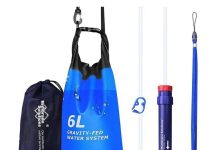High-net-worth individuals face complex wealth structuring, estate planning, and diversification needs that require a broad set of vehicles beyond conventional funds. High-net-worth families now combine trusts or foundations with SPVs and regulated funds to solve control, succession, confidentiality, and market access issues. As such, the right choices help meet clear investment objectives, aligning governance and creating a coherent system.
Trusts remain the classic private-wealth wrapper for succession and control. They separate legal ownership from beneficial interests, can accommodate differentiated distribution policies for multiple branches of a family, and slot naturally into family-governance frameworks. They are often used where families want flexible oversight of distributions and a durable framework for intergenerational transfer.
Foundations serve a similar end goal using a corporate-style form. A foundation has legal personality, no shareholders, and a council-led governance model, which can simplify decision-making and create a clear “home” for legacy or purpose assets.
For asset isolation, financing, and co-investment, SPVs are the go-to solution. Luxembourg remains a preferred hub due to flexible company law and a robust securitisation framework. The CSSF consolidates the legal and supervisory regime for securitisation undertakings under the 2004 law, and 2022 amendments increased flexibility and legal certainty for both on- and off-balance-sheet structures, which are helpful when families finance tangible assets or private-credit portfolios.
When portfolio construction, reporting, or distribution requires a regulated wrapper, European funds are viable options. The Luxembourg RAIF can be launched without prior CSSF product approval, provided an authorised AIFM is appointed; where the AIFM is EU-authorised, the AIFMD passport permits marketing to well-informed and professional investors across the EU.
Many families operate across Europe and the Gulf. In DIFC, the Registrar of Companies provides a straightforward process for entities, including foundations, and the DFSA supervises regulated activity through transparent authorisation and supervision. ADGM’s guidance hub and updated foundations framework provide comparable governance under English common law, which helps align boards, councils, and service providers across jurisdictions.Market comment on behalf of Mi






































